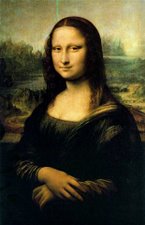
Ed (added Dec 17th) : Sorry, the pictures have mysteriously disappeared, and I can't find the files to upload a second time. If this causes problems, please leave a Comment and we'll see what we can do.
The enthusiasm of this present government for City Academies was a puzzle to this blogger to begin with. Why should a made-good businessman, able to lay his hands on a couple of million, be able to found a new school, and even influence what is taught in that school, when we, the long-suffering taxpayers, are then required to stump up another £25 million ? What say do we get ?
There has always been a smell of No 10 cronyism about those academies, not helped by recent reports that some of those sweet-talked into pump-priming a City Academy were then approached to extend the largesse by giving loans to the Labour Party, with the prospect of their name appearing in the Honours List.
The more I read about Britain’s sofa government, the more it sounds like a return to the kind of mutual back-scratching Restoration society that Samuel Pepys described in his diary. And this from a Labour government !
However, this is not a polemic about Blairism. It’s more to do with what is presently being taught in all our schools, and not just the growing number of those dubious City Academies.
A report a few days back mentioned the growing incursion into classrooms of glossy literature, promoting so-called Intelligent Design (ID) as a respectable alternative to Darwinism.
First, let me state my own position: it is somewhere between agnosticism and atheism, although I'm still not quite sure where precisely. But despite being non-religious, I believe that no reasonable person should object to ID being raised and discussed in an RE lesson.
After all, what is it except a watered-down version of the altogether more wacky Creationism? It's only the latter which sticks to a literal interpretation of the Book of Genesis, with “ingenious” explanations for dinosaur fossils and the like. ID, in contrast, does not deny that evolution occurred over millions of years, but maintains that it followed a Creator’s design, or template, rather than being the series of accidents envisaged in neo-Darwinism theory via random mutation and natural selection.
So what’s the objection to ID ? Does it really matter whether the progression from amoeba to City Academy sponsor was guided or not ?
Probably not, given that none of us depend totally on what we learn at school for our spiritual compass in life. We are exposed daily to new information, insight and debate in the media, that regularly challenge (or should) the kind of preconceptions we acquired at home or at school.
No, there is in my view little to worry about, except for one thing, and it is this. The proponents of ID are so convinced that their essentially religious view of the living world is the correct one that they consider it deserves equal billing with the Darwinist view in biology lessons.
It is not the purpose of this post to pontificate on how or where one should draw the line between scientific and religious speculation.
Anyone who has read (or tried to read) Stephen Hawking will know that the further one delves into the fabric of the universe, the harder it is to be certain about anything. The solid comfortable entities that we call atoms or molecules become ghostly, almost magical, entities, when one looks at the behaviour of the subatomic particles from which they are made.
But in an attempt to stay on terra firma, if indeed such a thing exists, I thought I would devote the final few hundreds of words to the subject of atoms and molecules, where there appears, sad to say, much ignorance and misunderstanding . And no thanks, says he, to the preponderance of arts graduates in the MSM, who shun any mention of real science, doing the reading public a huge disservice in the process.
Everything so far has been a preamble (dare one say a softening-up exercise) for the real reason for posting on this particular subject. It began the day before yesterday, with Ben Fenton’s two blogs in the Telegraph on the subject of ID, which rarely for the Telly attracted 36 Comments, including, towards the end, 3 of my own.
Ben Fenton 1
Ben Fenton 2
What caught my attention was the claim by Keith Thomas* that it was ridiculous to suppose that life-forms could have evolved without a guiding hand. He focused attention on their coded DNA template, akin as he says to a computer program, which could not have evolved, he says, as a series of random events. Ipso facto there has to be a great Computer Programmer in the sky !
Incidentally, I do not personally believe that DNA is the equivalent of a computer program. It's a coded recipe for making proteins, most of which happen to have enzymic /catalytic activity, speeding up particular chemical reactions, which is something quite different from what happens inside your laptop, but we will save that for another day.
*And belated apologies, Keith, for getting your surname wrong in one of my Telly posts
But it appeared to this retired biochemist that in all the current debate about ID, what one was seeing repeatedly was a mistaken public perception that atoms and molecules are like so many inert ballbearings, needing an outside shove in order to form the complex patterns and assemblies that one finds in living cells – as DNA, proteins etc.
What is not appreciated is that atoms, ions and molecules, the particles of chemistry, all have a tendency to self-organize. And given that there are weak forces between all molecules (van der Waals' interactions) that are ALWAYS , without exception, attractive (never repulsive), the trigger for this organization is often mere cooling, which slows the molecules down, allowing their essential "stickiness" to reveal itself.
The classic example is the snowflake, formed when water vapour condenses and freezes. The end result, as we know, are exquisite crystals, all with hexagonal symmetry. Yet each individual crystal we are told is unique, or nearly so.
But even at this level, dealing with H2O, a tiny molecule with just three atoms, there is complexity and mystery about the way these molecules self-organize. How come each of the six arms of the snowflake are identical. How does each one “know” how the others are developing in order to match their geometry exactly ?
The Wikipedia entry on snow geometry talks glibly about communication or “information transfer” between the arms. Well, if there are mysterious phone calls in the formation of a snowflake, perhaps scientists ought to try and understand that before addressing the subject of DNA !
It is fact that there are glaring gaps in our knowledge of everyday phenomena, simply because science, like politics, is the art of the possible. Scientists confine their studies to matters that are amenable to experiment: they do not waste time in banging their head against brick walls.
Anyway, here are a few graphics that summarise in pictures what we do know about water molecules, that describe how they are able to form ordered aggregates , but do not account for the artistic splendour of the end-result.

The individual water molecule is essentially V-shaped if one draws lines to connect the centres of the three atoms. The reason the water molecule it is not straight is due to the presence of two so-called lone pairs of electrons. They are invisible in the model, but balloon out into space, pushing the two hydrogen atoms (white) together. But these lone pairs can form hydrogen bonds to nearby water molecules , and behave therefore like “sticky” patches, allowing water molecules to form highly regular organized clusters.
The picture below shows a water molecule bonded with ( for starters) just four others in so-called tetrahedral geometry.

The process can be continued indefinitely, building up a three dimensional cage like structure from a series of hexagonal rings.

Why am I bothering to tell you all this ? To bore the pants off you ? Answer: it’s simply to make the point that molecules are not inert objects. They have movement (kinetic energy) at any temperature above absolute zero, that brings them together, a series of random collisions, and provided the collision speed is not too high, they then have the ability to stick together in a variety of patterns, allowing giant structures to be built up.
Imagine your child’s surprise if Lego bricks were tipped onto the carpet, and next day there was a model of a perfect pyramid, or even a feathery seaweed pattern on the carpet (see picture at top of a frost pattern on glass).
It would seem like a miracle, would it not ?, but molecules do this all the time, without any outside agency.
This is why chemists and biochemists do not immediately dismiss as absurd the idea that life-forms evolved by a series of chance collisions of atoms and molecules, over a long period of time.
That is not to say that the process will ever be reproduced in the laboratory. Who knows what the precise ingredients and conditions were that allowed the process to take place ? But it was not impossible in principle, and given the existence of a plausible mechanism, no matter how statistically improbable, they will prefer that to a defeatist line that in desperation invokes supernatural intervention.
That after all is what science is all about – seeking explanations in terms of known physical laws- instead of the religious opt-out . Or maybe that should have read "cop-out" instead. And that is why science lessons must be protected. ID is fine for the RE lesson, or the School Debating Society but should never be allowed to intrude into the school science laboratory.
Some may consider the views expressed here as an advocacy for atheism. Be that as it may, who's to say that it's not atoms and molecules - the building blocks of the material world - that are the crucial end-products of Intelligent Design ?
So intelligently designed, in fact, that a Creator can confidently leave them to their own devices, knowing that sooner or later, order, life even, will emerge from chaos.
If I were the religious kind, and thank the Lord I'm not sir, I would regard earthly molecules as God's seeds, lying on fertile star dust.









5 comments:
Hi Colin, I'm being naughty here - I'm very, very slowly starting up a blog, so can you see if you can get to it?!
http://chocsandcuckoos.blogspot.com
Thanks!
Pleased to confirm you are up and running, Louise. I've posted a Comment, by way of confirmation.
Happy blogging !
PS: Who knows - we may see other new blogs appear in 2007, like the Orléans Observateur, or Bill's ????? (suggestions invited).
Thank you, Colin, for your help - well I've got a couple of links up there but there are spaces that shouldn't be, between the links...but that will sort itself out one day. I even managed to get a picture of Angus on the blog - I did nothing more than I usually do but for some reason suddenly the picture came up after a load of futile attempts! But setting up a blog is real tear-your-hair-out stuff or is that I am kinda stoopid!
Yeah, I saw your links, and the one I tried worked fine.
I think I goofed when I said you could leave the top box empty. Insert "Links" or something that means the same.
I'm not sure why you are getting all the http stuff appearing, Louise. Maybe you did not enter a short name into the box below the one for the URL. Alternatively, maybe you used a receptacle ("widget")for Text instead of one for Links.
Time now to put together today's post on D&D, entitled "My Dodgy Dumpers' Database".
Readers of this blog were warned earlier about my having done some down-market jobs !
No, I entered the http thingy - I thought that if I entered 'Colin's blog' for example nothing would turn up - perhaps I have to enter the http and the short version and it is automatically redirected ... this is all too much for my weedy hippo!
Post a Comment